If you're here, you're probably a psychology student or want to know what a cognitive psychologist does. Lucky you, I've compiled a huge list of different fields and topics in cognitive psychology and turned this page into a giant resource just for you.
What is Cognitive Psychology?
Cognitive Psychology studies the mind and behavior, viewing the brain as an information processor akin to a computer. Emerging in the mid-20th century, this field rose to prominence following the earlier dominant paradigms of psychoanalysis, championed by figures like Sigmund Freud, and behaviorism, led by figures such as B.F. Skinner. As these earlier approaches began facing challenges and limitations, cognitive psychology offered fresh perspectives and alternative theories to understand the intricacies of the mind and behavior.
There are eight main parts of cognitive psychology, refer below for a quick table of contents on this page, and click on the headings to be directed to a more in-depth page:
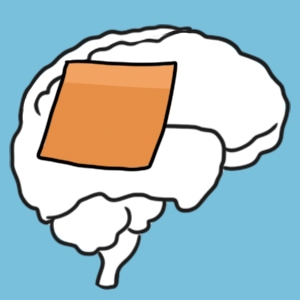
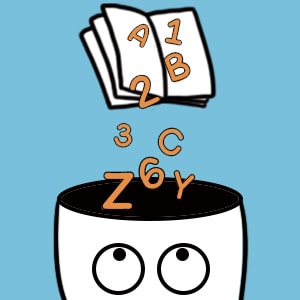


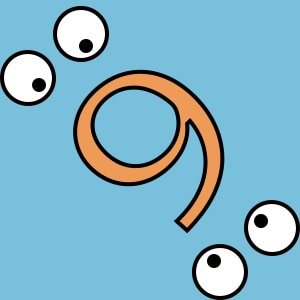
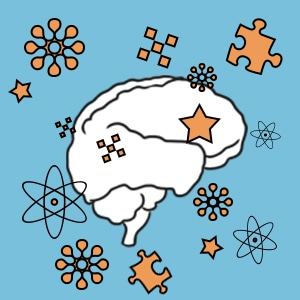

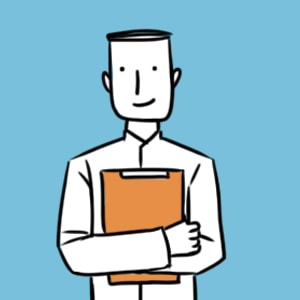
Distinguishing Cognitive Psychology: A Comparative Overview with Psychoanalysis and Behaviorism
Cognitive psychology, psychoanalysis, and behaviorism represent distinct paradigms within the vast field of psychology, each with its unique perspective on understanding human behavior and mental processes. Psychoanalysis, pioneered by Sigmund Freud, delves into the unconscious mind, emphasizing internal psychological conflicts, repressed memories, and the role of early childhood experiences in shaping an individual's behavior—behaviorism, on the other hand, largely championed by B.F. Skinner and John B. Watson focus exclusively on observable behaviors, contending that behavior results from conditioning and environmental stimuli, with little to no emphasis on internal thoughts or feelings. Cognitive psychology, which emerged as a response to these earlier paradigms, focused on studying mental processes such as perception, memory, problem-solving, and decision-making. It views the human mind as an information processor. It emphasizes the importance of internal thought processes, making it a significant departure from both the deep introspective approach of psychoanalysis and the external observation-centric perspective of behaviorism.
Basic Assumptions
1) 'Thinking' occurs between stimulus and response
2) Behavior should be studied objectively in a controlled environment using scientific methods
3) Humans are information processors with inputs and outputs
Perception
When it comes to your brain, Cognitive Psychologists like to think of it as a computer with inputs and outputs.
Perception deals with how our brain receives the "inputs" through our sensory organs and tries to make sense of the world. We have 5 main senses, although many more aren't discussed as much.
Memory
Memory is the brain's function for encoding, storing, and retrieving information. Without memory, we couldn't hold information for further applications.
There are many types of memory. However, the main model (Atkinson-Shiffrin Model) consists of 3 main parts:
- Sensory Memory: Information is initially captured from the environment through our sensory organs, such as the nose and ears, and then processed by the brain to form memories.
- Short Term Memory: Information you can hold in your consciousness for up to 18 seconds.
- Long-Term Memory: Information you can call upon and move to your short-term memory for recall or manipulation.
Another memory model (The Levels of Processing Theory) theorizes that the more we encode information, the longer we can remember it. Encoding information is the process of "making use" of it. For example, you might remember a new friend's name because she looks like a character from a movie you saw.
The Serial Position Effect was also another breakthrough in understanding how memory works. Hermann Ebbinghaus discovered that when shown a list of 10 to 40 words, people would be much more likely to remember the last few words and the first few words.
The Primacy Effect and Recency Effect break up the Serial Position Effect into two parts. The Primacy Effect is the tendency to remember the beginning of a list, such as the first person you meet at a conference. The Recency Effect is the tendency to remember the last of a list, such as the last side effects of a medication. Both of these can be used during studying to improve student retention.
If you'd like to test your memory, I have a 3-in-1 memory test you can take online for free. It's the first of its kind, and I'll even show you where you compare to the population that took it!
One last thing to note on memory is Mnemonic Devices. Mnemonic Devices are mental tools that can be used to extend the duration or capacity of long-term memory without much work. There are many mnemonics. However, I will explain two below:
Acronym: Instead of trying to remember an entire sentence or phrase, you can keep the first letter of each word. For example, "POTUS" and "ROY G. BIV" are both acronyms commonly taught to students.
Chunking: Most people can remember 5-7 items in short-term memory at a time. When they chunk information into pieces of 3-4 items, they can hold up to 4 'chunks', which increases the number to 12-16 items in short-term memory.
Learning
What is learning in psychology, you ask?
Learning is the process by which individuals acquire new knowledge or skills through experience, leading to a change in behavior or understanding that benefits the learner. This acquisition often involves the integration of memory and perception.
Classical Conditioning
The first big breakthrough in learning was Classical Conditioning, attributed to Ivan Pavlov and his famous dog experiment. Not long after, John B. Watson tested classical conditioning on children in his infamous Little Albert study.
In short, classical conditioning works by pairing two stimuli to a response. For example, you might want to pair your dog coming into the kitchen by ringing a bell so you can feed them if you ring the bell and feed them enough. Eventually, they should learn the bell means food is about to come.
This theory strongly supported the behavioralism theory.
Operant Conditioning
After classical conditioning was discovered, the world of cognitive psychology was shaken by operant conditioning. B.F. developed operant conditioning. Skinner theorized you could encourage or discourage the behavior by adding or removing stimuli.
Remember: reinforcement means to increase the likelihood of a behavior, and punishment means to decrease the likelihood of a behavior.
Another important thing to note on operant conditioning is that Skinner realized the importance of schedules. In other words, how often did the conditioning happen, and how often was it rewarded/punished? Was the ratio of rewards fixed? Or was each reward given out at a specific interval?
Observational Learning
But do we learn without needing a reward or by connecting stimuli? According to Albert Bandura, we can also learn by watching others.
The Bobo doll experiment was conducted to see if children would react to a toy the same way they observed others to act towards it. In short, they did. There are 4 main parts of observational learning: attention, memory, reproduction, and motivation.
Michael Tomasello is a comparative psychologist who contributed to cognitive psychology by showing that one of the main things that differentiates humans from other animals is their unique ability to learn by watching.
Attention
Attention in psychology is defined as the selective concentration of our consciousness on certain sensory inputs or processes. Within the realm of cognitive psychology, various theories seek to explain attention. Two prominent theories among these are Broadbent's filter model and Treisman's attenuation model.
Broadbent's filter model

In 1953, a psychologist named Cherry found the "cocktail party effect," where participants could pick out words from a bunch of noise they heard. This was interesting because this means we can filter the information we hear after we hear it.
5 years later, in 1958, Donald Broadbent used this effect to help support his theory of how attention works. In his dichotic listening experiments, participants listened to two sounds in each ear and were asked to focus on one. When focusing on both, they couldn't understand either, however, when they focused on one, they could clearly understand what was being said.
Broadbent said that sensory information enters the brain, and we filter out what is unnecessary or unwanted and store the rest in working memory so we can use it. A bottleneck is commonly used to help explain this model - we can only let so much information into our working memory at a time. We have to choose what is important.
Treisman's attenuation model
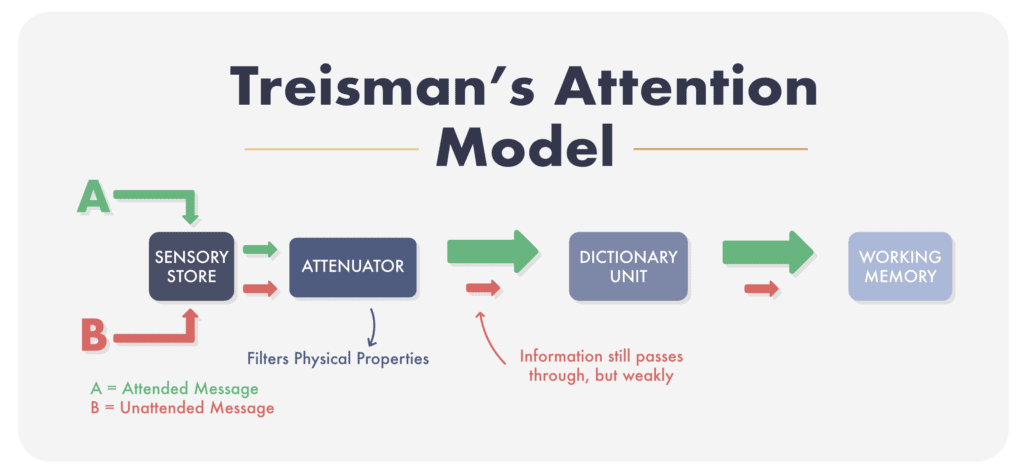
Anne Treisman was one of Broadbent's students. She continued his model and filled the problems with her attenuation model. Attenuation is turning up or down the intensity of information, similar to adjusting a volume knob. That is exactly how her model works, too: we can turn our attention to something and lower our attention to other things.
The Invisible Gorilla experiment supports Treisman's attenuation model. In this experiment, participants are asked to watch a video of people throwing a basketball around. The goal is for them to count how often the basketball is passed. However, halfway through the video, a man in a gorilla outfit walks between the basketball players. Most viewers don't even notice the gorilla. They turned down the gorilla and continued to focus on the basketball.
Metacognition
To put it simply, metacognition is the process of thinking about thinking. Metacognition is important because it seems to be very unique to humans.
One of the most important developments in cognitive science about metacognition is the Self-Fulfilling Prophecy. The Self-Fulfilling Prophecy is a phenomenon in which a person expects themselves, and by just having the expectation, the outcome is more likely to happen.
According to the psychologists who coined the term, the Self-Fulfilling Prophecy is “A false definition of the situation evoking a new behavior which makes the originally false conception come true.”
Another very important aspect of metacognition is meditation. Mindfulness Meditation is a mental exercise in which you try to not think about anything. Doing so seems to increase the grey matter in the brain, along with other positive benefits, such as:
- Improving physical health
- Reduced total stress
- Improved immune system
- Lower risk for depression
Cognitive Development
One of the most famous and tested theories of development in cognitive psychology is the work of Jean Piaget. He proposed that we go through 4 main stages of cognitive development:
Sensorimotor Stage
From birth to 2 years old, we are characterized by our ability to know how to operate our "motors." We are essentially learning how to move about the world at this stage. In this stage, babies learn the concept of object permanence, the theory that they aren't gone forever when things disappear.
Preoperational Stage
From ages 2 to 7, we start to use language to communicate and think. However, children in this stage are still egocentric, meaning they struggle to see things from the views of others. Another notable feature is pretend play and the introduction of creativity.
Concrete Operational Stage
During the Concrete Operational stage, Piaget stated that children ages 7 to 11 started thinking more logically about specific events. They also develop and understand a concept called Conservation. Their thinking is much more organized yet still concrete and basic. Egocentricity fades away, and we can think how others feel.
Formal Operational Stage
After around age 11, children develop complex cognitive skills like advanced reasoning and thinking in abstractions. Questions of moral, ethical, and political ideas start to arise, and children solidify their identity.
Piaget's theory of a child's development has been a standard in cognitive psychology for a long time, and that's because his theories are hard to ignore.
Cognition in Cognitive Psychology
Cognition refers to the mental processes and activities of acquiring, processing, storing, and applying information. It encompasses a broad range of functions, including perception, attention, memory, language, problem-solving, and decision-making. Understanding cognition is central to the field of cognitive psychology.
Cognitive psychologists aim to study and understand these intricate mental processes. To achieve this understanding, they take several actions:
- Research and Experimentation: Cognitive psychologists design experiments to understand various cognitive functions. This might involve studying how distractions affect attention or understanding the conditions under which our memory is most reliable.
- Neuroimaging: With the advancement of technology, cognitive psychologists often collaborate with neuroscientists to use tools like fMRI (Functional Magnetic Resonance Imaging) or EEG (Electroencephalogram) to observe the brain in action, enabling them to relate cognitive processes to specific brain activities.
- Modeling: They create models, often computational, to simulate cognitive processes. These models help predict human behavior under different conditions and refine our understanding of cognition.
- Assessment: Cognitive psychologists develop and use various standardized tests and assessments to measure cognitive abilities. This can range from intelligence tests to specific tests that measure attention span, memory recall, or linguistic abilities.
- Intervention: Based on their findings, cognitive psychologists might develop interventions to enhance cognitive processes. This could involve creating training programs to improve memory or attention or developing therapeutic strategies for individuals with cognitive impairments.
- Real-world Application: Findings from cognitive psychology have applications in various fields, from education to artificial intelligence. Cognitive psychologists might consult on best practices for teaching and learning based on cognitive principles or advise on user experience design that aligns with cognitive processes.
- Collaboration: Cognitive psychologists often work in interdisciplinary teams, collaborating with educators, clinicians, computer scientists, and neuroscientists, among others, to gain a holistic understanding of cognition and its implications in different fields.
By delving deep into the intricacies of the mind and its functions, cognitive psychologists provide insights that have profound implications, not just in understanding human behavior but also in enhancing our quality of life.
Famous Studies and Experiments
We are still adding information to this section, but here is a list:
Loftus and Palmer
Peterson and Peterson, 1959
Cocktail party Effect
Invisible Gorilla
The Spacing Effect
